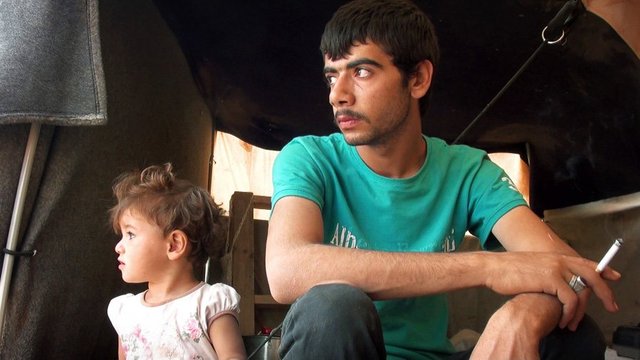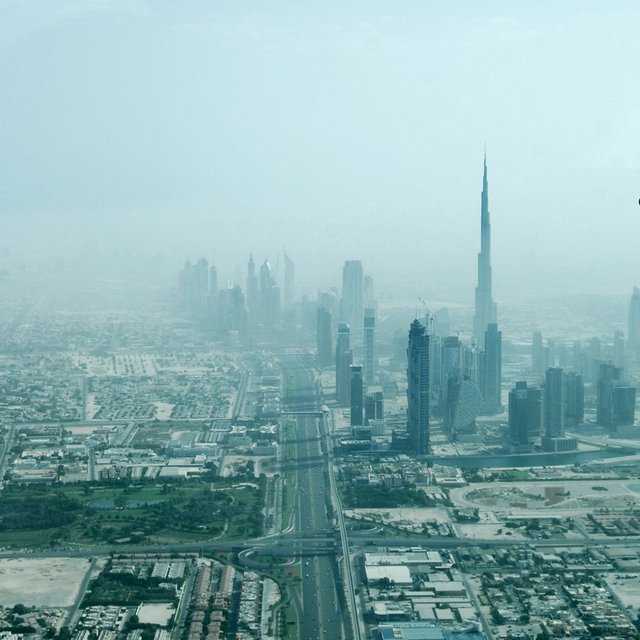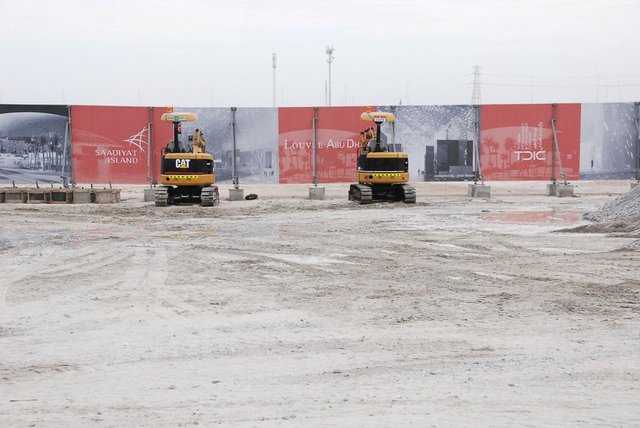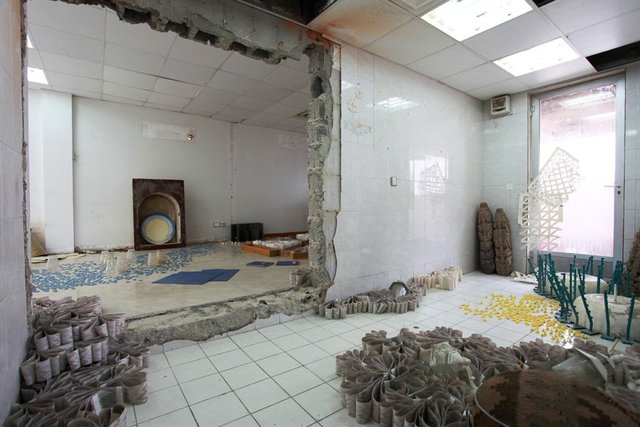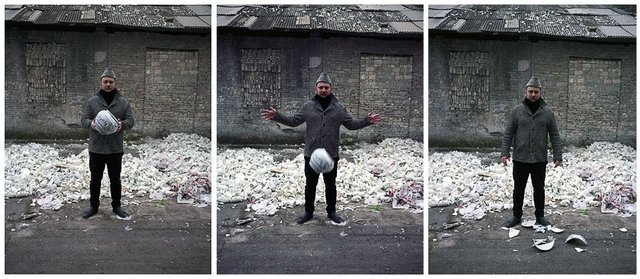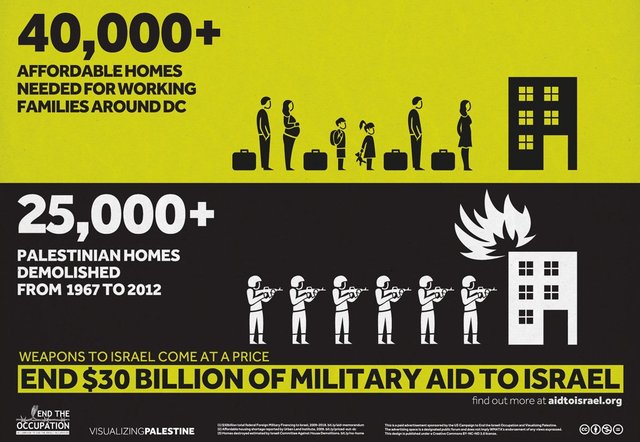Essays
The Future of the Future
Ibraaz Platform 005 Editorial
Life is a series of collisions with the future; it is not the sum of what we have been, but what we yearn to be.
Jose Ortega y Gasset
We give the name of
our selves to our needs.
We want what we are.
J H Prynne
The tensions and side-effects produced by globalization, intentional or otherwise, have provided much by way of content for contemporary art. The systems and networks of globalization, for all their patterns of inequitable wealth distribution and uneven development, are also – for better or worse – productive. They realign the relations of production, dissemination and reception that determine the circulation of art objects and practices. In the context of North Africa and the Middle East, the effects of globalization can be read not only in terms of cultural production but also in the fast-developing topographies of cities across the region.
The task of gauging or recording the long-term effects of these processes on local communities and art practices is a gargantuan one; however, one thing remains certain: in a globalized cultural economy beholden to the demands of global media outlets, 'soft power' diplomatic initiatives, international market integration, and the culture industry, the production and distribution of culture across the region is changing rapidly and developing in unexpected ways.
It is with these points in mind that Ibraaz's Platform 005 set out to address some of these changes and their impact on how culture is produced in the region, who it is produced for, and who benefits from the work of art. In the last decade or so, developments across the United Arab Emirates (U.A.E.) have presented ample evidence of globalization's impact. One of the prime ideals guiding and allowing for globalization is the ascendency of deregulated, precarious labour conditions as the normative mode of employment rather than the exception.
Add to this the international migration patterns and so-called 'economic migrancy' and it becomes all the more clearer as to who the winners and losers are in the apparent hegemony of globalization across the region. Despite the fact that there is still no naturalization process in the U.A.E., the net migration rate into the region rates amongst the world's highest with Southern Asian migrants – Bangladeshi, Indian and Pakistani – accounting for over half of the overall population (with Emiratis, in turn, making up approximately 16 percent in total). It is the treatment of the majority of the population – the migrant workers that make the U.A.E's cities of the future – that has drawn much by way of negative criticism in recent years from both within and beyond the region.
In their essay report for Ibraaz, Gulf Labor, a coalition of international artists working to ensure that migrant worker rights in Abu Dhabi, observe continued failings across a number of areas when it comes to equitable labour rights and humane working conditions. If we are witnessing what many refer to as 'Gulf Futurism', a state of being specific to the region and explored here in an exclusive project for Ibraaz by Sophia Al-Maria, then the dreamscapes of the future are in constant danger of being usurped by the spectres of the immigrant labourers upon whose abject misery they are being built.
The unequal distribution of wealth and risk, the suppression of union-based labour and poor labour laws, the production of a class of migrant labourers, the increasingly precarious lives lived by so-called economic migrants in the region, are all testament to the effects of globalization. In Hans Haacke's photographs we see the all too familiar evidence of such facts and the growing awareness of the symbolic and actual disjunction to be had between the dreamscapes of the future and brutal, sordid reality that underwrites their construction. But before we point the finger too forcibly, we should be ready to admit to a singular, broader fact: the global art world is powered by precarious labour, whether it is the intern in a gallery in London or the worker producing an artwork in downtown Delhi or Shanghai. Precarity – as Guy Standing argues in The Precariat: The New Dangerous Class (2011) – is and continues to be the order of the day for a whole new class of working individuals and communities across the globe.
If we are looking for a byproduct of globalization, we need look no further than the phenomenon that is the biennial exhibition. In Sharjah this year we experienced what was for many commentators an important and significant interjection into debates around globalization and the neocolonial moment. Whilst the Sharjah Biennial is seen by some to be an exercise in urban and regional redevelopment, and therefore a pertinent example of how artistic production can be instrumentalized to suit the needs of regional governments, we need to observe a perhaps less obvious fact: this is the precondition of biennials worldwide and has been for decades. It is not only the precondition but the future of biennials, if not art, as an increasingly instrumentalized practice in a neoliberal economy of meaning that promotes apparently productive, if increasingly prescriptive, outcomes for culture as a practice.
In an exclusive interview for Ibraaz, the president of the Sharjah Art Foundation, Sheikha Hoor Al-Qasimi, notes that in order to successfully negotiate localized concerns against the backdrop of global demand, you have to think about your audience in relation to an event such as the Sharjah Biennial which, with its local context and international profile, is often compromised by both through no specific fault of its own. Al-Qasimi observes that whilst there is a danger of over-gentrification through 'biennialization', a considerable number of the buildings in Sharjah are in fact renovated or rebuilt in an act of conservation rather than gentrification. Again, the forces of globalization, whether it be the art world as a prima facie case of global-tourism, often produces results that are counter to our expectations.
For Walter Mignolo, writing in an extended essay on the recent Sharjah Biennial, we are witnessing an emergence of what has been termed the 'Global South'. Discussing the process of decentring that took place in the biennial, Mignolo examines how the exhibition format is utilized to both appropriate and undo the biennial as an institution. This sense of an internal debate about culture as a practice and the logic of late-modernity, is further addressed in Nadia Mounajjed's essay where the issue of urbanism is observed as a consequence of unprecedented economic, political and technological change for the majority of Gulf countries. What becomes clear, the author suggests, is that globalization holds contested meanings for many in the region and is often rejected for its associations as a western project and a one-way cultural invasion.
These issues remain largely on the level of structure, but it is infrastructure that produces networks of being-in-the-world, be they social, cultural, political or historical. Networks and systems, in turn, produce practices and processes, and that is all the more evident when we look more closely at what is specifically happening in contemporary art practices across the region. In Raed Yassin's homage to Ai Weiwei's controversial work Dropping a Han Dynasty Urn (1995), we see how appropriation continues to open up channels of influence and productive counterpoints in the work of artists across the region. For Yassin, who in 2011 travelled to Jingdezhen, one of the porcelain capitals of China, the aim was to fabricate seven porcelain vases depicting key battles of the Lebanese civil war. The work seeks to synthesize the ancient tradition of narrating epic battles and mythologies, the intricate fabric of the oral and written histories of the Lebanese Civil War, and the decorative-reproducible condition of the object itself into a material testimony to global art production and cultural heritage. The 'global' artwork, as Yassin's work attests to, draws upon and indeed exploits the sinuous channels of globalized trade.
The city continues to be to the focus for global developments. In Sara Giannini's essay, we find the performative tours of Rani al Rajji interweaved with the writing of Michel De Certeau as we circle downtown Beirut. In the text, Al Rajji and De Certeau guide Giannini through the intertwining of collective memory and private interests, which has, conflictually for many, been shaping the new city centre – the latter a glorious, if not inglorious, eruption of global neoliberalism in postwar Beirut. In Hanan Toukans's lengthy analysis 'On Being the Other in Post-Civil War Lebanon: Aid and the Politics of Art in Processes of Contemporary Cultural Production', the practice, production, exhibition, reception, circulation and sustainability of what has become known as postwar contemporary Lebanese art is considered through a series of conversations between members of the public, artists, cultural critics, curators, and public intellectuals. Infrastructure and production come together here under the umbrella of global debates about cultural production in an era of conflict and, indeed, post-conflict.
Published in collaboration with the river has two banks, an independent project initiated by Shuruq Harb, Samah Hijawi and Toleen Touq, Ahmad Zatari's essay and lecture performance follows the Jordanian music pioneer Tawfiq Al Nimri's on a journey, unpacking along the way some of the complex transnational influences that informed his music whilst also challenging the singular identity enforced on nationalist and patriotic music production in Jordan today. The published essay further expands on the lecture performance by analysing some of the musical and political influences that gave rise to the emergence of an 'alternative' music scene in Jordan. In a complex and intricate reading of popular Jordanian song, Zatari traces how the figure of Palestinian was first seen as a comrade in arms in folk song and how these tropes of understanding have changed over time.
In Haig Aivazian's interview with the group Visualizing Palestine, this investigation takes on a more sombre note concerning as it does events in early 2012, when mainstream news outlets finally latched on to the plight of Palestinian prisoners held in Israeli jails. The attention, as noted in this interview, was brought on largely by a hunger strike undertaken by Khader Adnan prior to his April release that same year, after 66 days of imprisonment without charge – the longest hunger strike in the history of the Palestinian struggle. But while the resolve of Adnan's protest was clear to see, the physical effects of hunger strikes are little known to the mainstream public. In February 2012, a sleekly designed timeline began circulating on social media, designed by Visualizing Palestine (VP). The work portrayed the durational progression of a hunger strike – its dangers and physical effects – alongside a history of the use of hunger strikes as a tool for non-violent struggles.
Globalization, in league with the ideology of neo-liberal capital, continues to inflect regions, communities and individuals in ways that might only become apparent after the event and in time. As a process, it is arguable that globalization can only exist by setting up political, social and cultural forms of exceptionalism wherein which individuals and communities are placed beyond recourse to law and political representation. In these zones of indistinction, which are complex entities produced by the indifference of globalisation and the long-term legacies of equally impervious forms of colonization, deregulation and precarity are the exemplification rather than the exceptional state of being.
Since 1999, Italian artist and filmmaker Mario Rizzi has being examining the plight of the marginalized, underprivileged and, in particular, those refugees who exist on the margins of representation. In the interview here, he discusses Al Intithar (The Waiting), his most recent film, which was premiered in the short film competition at the Berlin Film Festival 2013. A co-production with the Sharjah Art Foundation, Rizzi filmed the life of Syrian refugees at camp Zaatari in the Jordanian desert over several weeks, from September to November 2012. Al Intithar (The Waiting) is the first part of a trilogy that reflects on the emergence of a new civic imagination through the stories of individuals in Malaysia, Tunisia, Egypt, Bahrain and Syria.
Art's 'role' is often imbricated within a process of re-envisioning an imaginative potential – a horizon of potentiality – that contests the political imagination, the configuration of the social, and reductive versions of history. This 'role', for want of a better word, seems fitting when it comes to negotiating the effects of globalization in all their intricacies. In so doing, art produces forms of knowledge about globalization that would not – and possibly could not – otherwise exist. This is the role of the aesthetic, if not poetic imagination: to think otherwise.
Globalization seems to be offering us, in all its incursions into local and regional contexts, a vision of the present and future that remains inescapable if not irremediable. But does that have to be the case? In cities such as Abu Dhabi, Beirut, Tunis, and Cairo, are we seeing other potentialities emerge that could define not only the momentous changes we are witnessing in the present, but also determine future horizons of engagement.
Globalization, finally, is not only re-calibrating how we produce and experience culture, but conditioning modes of production and reception so that they answer to multiple and interconnected demands including, but not limited to, issues around tourism, regional development, urban regeneration, public relations, and the ethic of public-private sponsorship of the arts. This is not a region specific issue; on the contrary, it is, fittingly, a global issue and the stakes as they stand could not be higher. They involve the very future of the idealism once associated with culture as an agent of a common rather than an individual or indeed privatized good.

